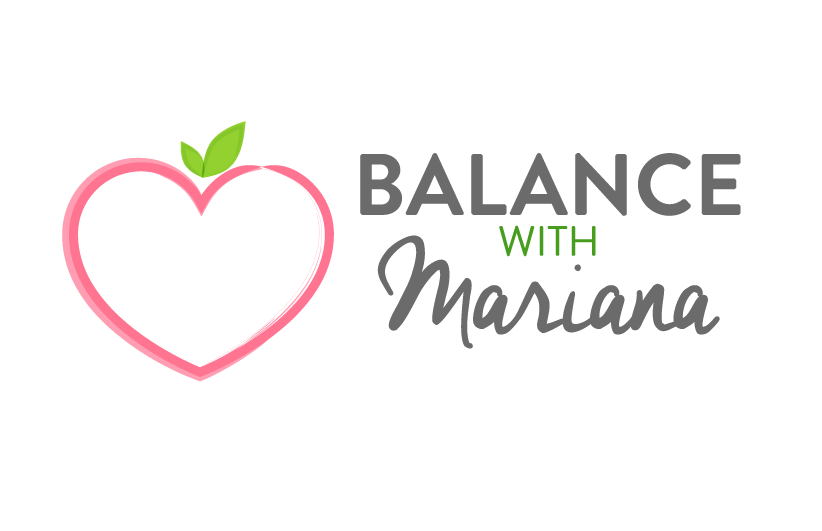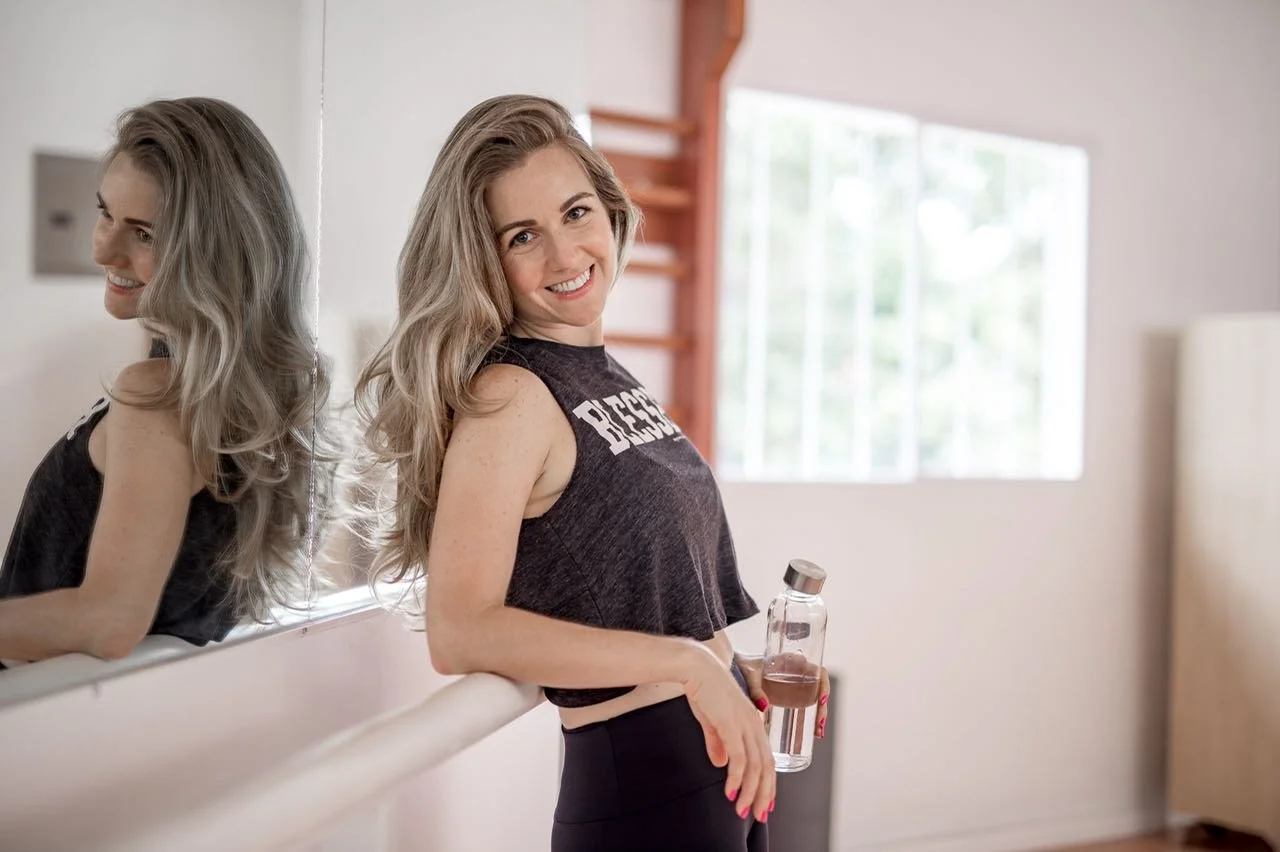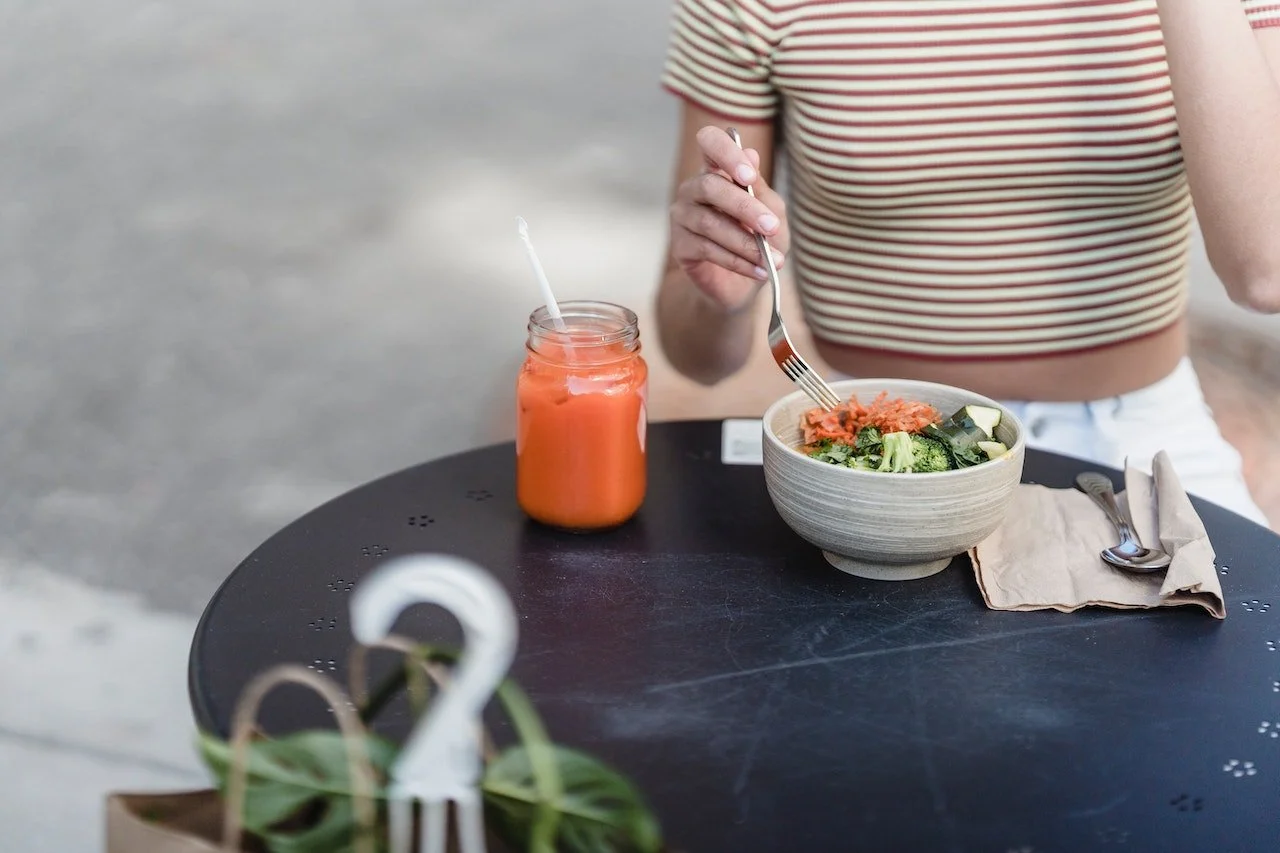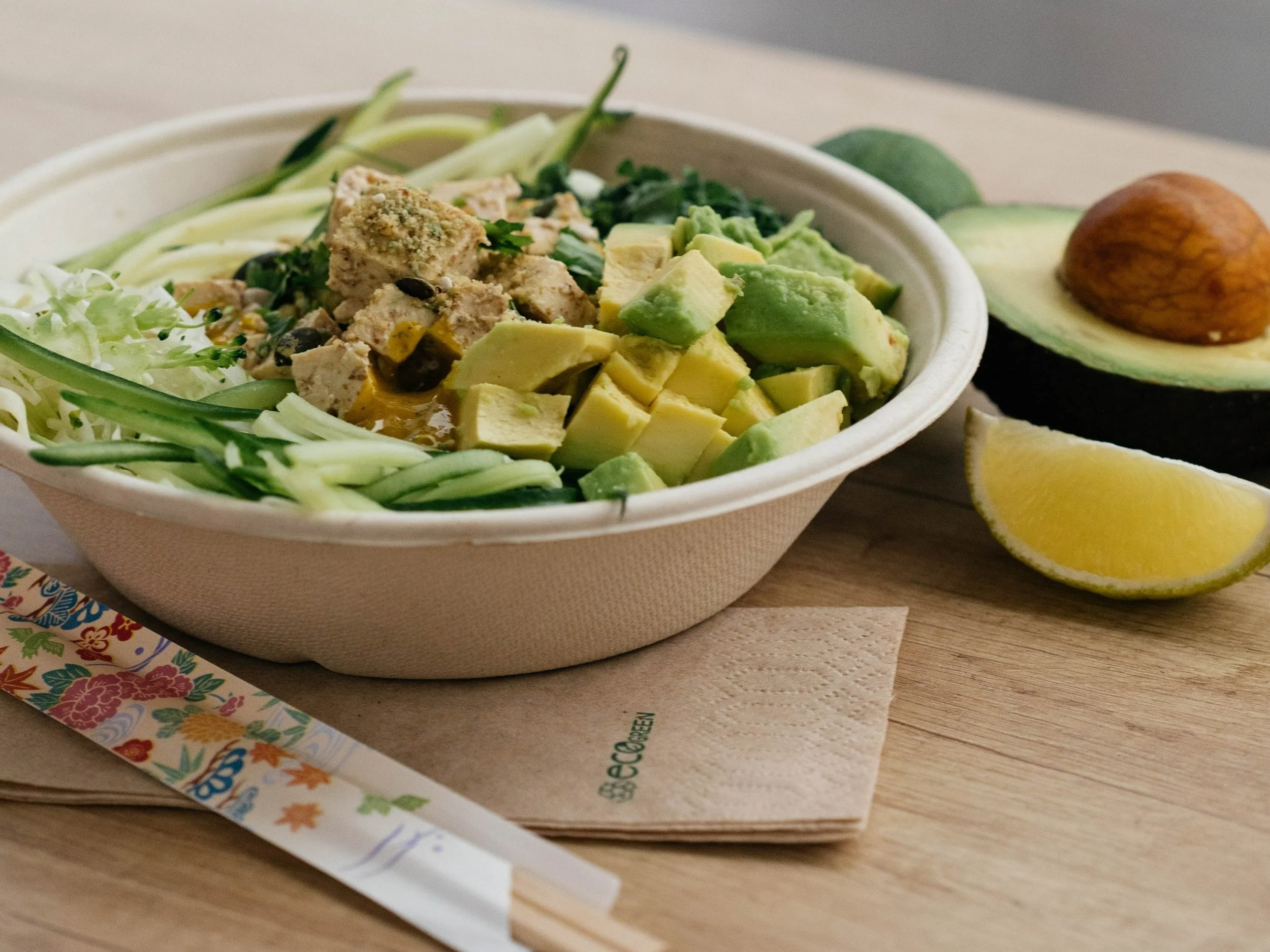As women, we are constantly transitioning between different hormonal phases, which (many of us don’t realize) create different reactions in our bodies and minds. These hormone fluctuations affect our energy, mood, appetite and even our sleep. In order to feel our best and support our health, it’s super important to understand our cycle and connect with the different stages.
This is where the concept of “cycle syncing” comes to play…
The main idea behind Cycle Syncing is that we want to connect with how our body changes throughout the cycle and use these changes to our benefit, to achieve optimal health. We do this in 3 simple steps:
First off, we have to start tracking our cycle
Then we must pay closer attention to our hormonal changes (and how we feel) throughout our cycle
Finally, we begin to structure everything in our daily life accordingly—our eating habits, exercise routines, even work and other activities—to promote optimum well-being.
The result is an increased sense of health, balance and connection to our femininity in our day to day.
Cycle syncing is a great tool for helping us to balance hormones, improve PMS symptoms, support fertility, as well as avoid pregnancy.
Note: Cycle syncing works best for women that are currently cycling and NOT on hormonal birth control. However even if you have PCOS and/or amenorrhea (with irregular or missing periods) you can still apply this! Just note that it can take 2-3 months for you to feel the positive effects of cycle syncing!
WHAT IS CYCLE SYNCING?
Cycle syncing was first coined by Alice Vitti in her book “Woman Code” in 2014. Basically, cycle syncing involves aligning lifestyle factors like diet, exercise, social commitments and more, in accordance with the different phases of your menstrual cycle to improve hormone balance and alleviate symptoms associated with hormones.
Cycle syncing can also help optimize your health and fitness goals by taking into account the unique hormonal changes that occur during each phase of your menstrual cycle. And in my experience, it helps us to connect more with our feminine side, and even help us feel more “sexy”.
MENSTRUAL CYCLE PHASES
Before diving in, lets do a quick overview of our cycle and the 4 phases.
Menstrual phase (or “early” follicular phase): typically 3-6 days. First day of your bleed is what we call Day 1. For purposes of this cycle syncing guide we will say Days 1-5.
Follicular phase: typically 9-12 days, for this guide we’ll say Days 6-13.
Ovulatory phase (or “early” luteal phase): typically 2-3 days, for this guide we’ll say Days 14-16.
Luteal phase: typically 9-14 days, for this guide we’ll say Days 17-28 (though it often extends to day 30 or 31).
A healthy “regular” cycle lasts between 26 to 32 days, so this is based on averages (most studies show an average of 28 days so that is what I use for my guide), but if you track your cycle, you can adapt by adding/subtracting a few days if needed of any stage.
So, now, let’s dive in!
Let’s start by defining the 4 phases and how to eat /move / focus your attention during each phase. This is just a broad overview, but soon I’ll be launching an in-depth 30-day reset with a lot more detail 😊!
MY BASIC CYCLE SYNCING GUIDE:
Phase 1: Menstrual phase (Days 1-5)
The menstrual phase is when the uterus begins to shed its lining due to the drop in estrogen and progesterone, and we bleed. It’s common to experience a little bit of nausea, headaches and loose stools, especially on days 1-2 (which is part of what we aim to minimize by cycle syncing).
During this menstrual phase, your energy levels are likely to be low due to your estrogen and progesterone levels being low and the potential loss of nutrients from bleeding. This can lead to feelings of fatigue as well as some bloating.
This phase is often compared to “winter” when we’re likely to feel desire to stay indoors, relax, watch movies and eat warming, comforting foods.
SUPPORT IT by:
eating nourishing foods that build iron, and anti- inflammatory foods to fight cramps
taking time to rest and honor this sacred time (feel free to say NO to social plans!)
do lower intensity exercise such as walking, and more gentle yoga and barre if it feels OK
increase meditation and breathwork
DRINK: 2L water or more per day, non-caffeinated tea, and kombucha to support gut. Drink Red raspberry tea (for “tea cycling” – more on this in my upcoming 30 day reset!) and if you have cramping, chamomile tea and fennel tea are great to relieve any pain/bloating.
EAT:
ANIMAL PROTEIN grass-fed red meat, fish (esp. sardines), shellfish (esp. oysters, clams, lobster, scallops, crab), poultry (chicken, turkey), duck, pork, organic eggs
VEGAN PROTEIN/LEGUMES: iron-rich plant based legumes such as red beans (pinto, kidney and adzuki beans), black beans, edamame, tofu and tempeh.
GRAINS: wild rice, black rice, brown rice, buckwheat, millet
VEGETABLES: spinach, chard, kale. collard greens, broccoli, mushrooms, beets, bell peppers, root vegetables, turmeric
FRUITS: citrus fruits, strawberries, cherries, pineapple, mango, papaya, blackberries, blueberries
NUTS & SEEDS start pumpkin seeds, flax seeds. Peanut butter & almond butter and mixed nut/seed butters
Phase 2: Follicular phase (Days 6-13)
The follicular phase is when a follicle starts building in the ovaries. FSH starts increasing to help mature eggs, ovaries begin making estrogen, and the uterus lining begins to thicken. Then LH starts to increase right before ovulation.
During this phase, as your estrogen levels increase, we usually see an improvement in mood and energy levels.
To take advantage of this positive boost (and to help support healthy ovulation) we want to go “light” with our food and lifestyle. Think of it as spring time after the winter. Start going outside, doing more activities and lighten up your foods.
Note: This is a great time to do more intermittent fasting and more “keto” type meals, however, some healthy carbs are necessary, especially as we want to support increased activity and maintain healthy levels of glucose (which can be slightly lower in this phase) and support the increase in estrogen for healthy ovulation.
SUPPORT IT by:
Using your higher energy to stay active. This is a great time to increase your workouts, add in higher intensity (a great time to add in some cardio-barre or cardio-boxing, running, or HIIT classes)
Increase your social activity! Book dinners, outings, etc. with friends and family.
Support your body with energy-building foods; Eat complex carbs (in small amounts) and enough protein to support your more active lifestyle and increased energy levels.
Continue to ensure you get enough iron and vitamin C to replenish levels that may have been depleted during your period.
Start green smoothies with green superfoods.
Incorporate sprouted and fermented foods that metabolize estrogen, like broccoli sprouts, microgreens, sauerkraut and kimchi.
This is a great time to do a 7-day or 10-day detox.
DRINK: 2L water or more per day, add lemon juice and/or fruits/herbs to your water to increase energy. Drink nettle tea for “tea cycling” that helps detoxify with the increase in estrogen.
EAT:
PROTEIN: Grass-led red meat, fish, poultry (chicken and turkey), lamb, seafood (ex. crab, clams, trout), eggs and dairy products if you tolerate them.
VEGAN PROTEIN/LEGUMES: Lentils, edamame, tempeh, tofu (choose organic for all soy products!) and mung beans. Spirulina and other blue/green algae.
GRAINS: Quinoa, amaranth, whole-grain oats, Ezekiel bread.
VEGETABLES: Salad (lettuces and all leafy greens including arugula, spinach and kale), artichokes, broccoli. sugar snap peas, green beans, green peas, carrots, sprouts. artichoke, parsley, sweet potato. Also raw sauerkraut, kimchi and pickled veggies.
FRUITS: Avocado, citrus fruits, banana, apple, apricot, kiwi, blueberries
NUTS & SEEDS: Pumpkin seeds and flax seeds (for “seed cycling”). Also include chia seeds, hemp seeds, peanuts, almonds, cashews, walnuts, brazil nuts and all nut/seed butters.
Phase 3: Ovulation phase (Days 14-16)
During this phase, your estrogen and progesterone levels are at their highest, which can boost your mood, energy levels, and libido. The ovulation phase is the stage at which your body is getting ready for a potential pregnancy. We have usually highest energy too and are likely to feel more creative, upbeat, and optimistic. So we want to capitalize on this! Think of this phase as “summer time”.
On the downside, it’s common to be a little bit constipated or bloated for a day or two, so we do what we can with diet/lifestyle to combat this. Continue with relatively lower-carb meals and an increased focus on probiotic and fiber rich foods. Also, continue with the fast-paced/ high-intensity movement to help keep “things moving” and avoid bloating/constipation.
However, tune in to your body; some people may experience some ovulation symptoms and feel best by slowing down a bit for these 2-3 days, decreasing any fasting and potentially increasing healthy carbs a bit.
SUPPORT IT by:
Avoiding salty foods to eliminate bloating.
Eating tons of fiber-rich foods and probiotic rich foods and keep exercising to decrease constipation
Continue higher level exercise, and it’s the best time for sex if trying to get pregnant
Planing your work presentations, workshops, speaking engagements, and it’s also a great time to vocalize needs/desires, do collaborations and to start projects
DRINK: 2L. water or more per day, add a greens powder to increase fiber. Start drinking dandelion tea for “tea cycling”
EAT:
PROTEIN: Grass-fed red meat, lamb, salmon, tuna, shellfish (ex. shrimp) and organic eggs.
GRAINS & LEGUMES: Quinoa, amaranth, teff, corn (non-gmo), Ezekiel or sourdough bread if tolerate gluten. Lentils, peas and split-peas.
VEGETABLES: Broccoli, cauliflower, lettuce, all dark leafy greens, tomatoes, bell pepper, eggplant, asparagus, zucchini, squash, radish and microgreens.
FRUITS: Papaya, watermelon, cantaloupe/melon, all berries (strawberries, blueberries, blackberries & raspberries), cherries, coconut, grapefruit, plums. pears, peaches, goji berry.
NUTS & SEEDS Sunflower seeds (and sunbutter), sesame seeds (and tahini), macadamia nuts, pistachios, dark chocolate & carob. Add maca is great too (I suggest organic gelatinized maca powder).
Phase 4: Luteal Phase (Days 17-28)
During this phase, your progesterone levels increase, which can cause symptoms such as bloating, breast tenderness, and mood changes. If your egg hasn’t been fertilized, we see a drop in both progesterone and estrongen as your body gets ready for menstruation.
In the first days of this phase we still have good energy, but as our hormones start to drop so does our energy, and its helpful to start pulling back on our activity level. By day 20 we want to switch to lower intensity exercise and start decreasing out commitments (social, work, everything). We want to focus on eating foods that are a bit higher in complex carbohydrates (root vegetables are great for example!) to help regulate mood and energy levels. I also suggest avoiding extreme fasting in this stage.
This stage can be when we experience “PMS” symtoms such as low energy, headaches, cramping, brain fog/difficulty concentrating, insomnia and “moodiness” so our focus is on supporting our hormones to minimize any of these PMS symptoms.
Note: While our body needs a bit more calories and healthy carbs in this phase, the increased progesterone usually implies slightly higher levels of glucose, therefore we need to be careful to keep blood sugar balanced and minimize spikes. Try including healthy carbs in moderate portions, always pairing with fiber, healthy fats and protein. SEE MORE HERE ON BALANCING BLOOD SUGAR.
SUPPORT IT by:
Eat high-iron, nutrient- dense, warm, and comforting foods to prepare for menstruation.
In the second half of this phase (aprox the week before your period) start to reduce exercise, focusing more on lower impact exercises – gentle barre, pilates, yoga, walking
Book a massage, facial or any spa treatment that relaxes you
Do more reading and journaling; this is a good time for more introspection (to be continued into menstruation phase)
DRINK: 2L water or more per day, avoid caffeine. Continue warm roasted Dandelion Tea.
EAT:
PROTEIN: Bone broth, grass-fed red meat, turkey, halibut, cod, salmon, tuna.
LEGUMES/VEGETARIAN PROTEIN: Chickpeas, cannellini beans, red beans, black beans, edamame, tofu and tempeh (always choose organic non-gmo soy products)
GRAINS: Brown rice, wild rice, gluten-free organic pasta (including lentil, chickpea, bean, quinoa and brown rice pastas)
VEGETABLES: All dark leafy greens (spinach, kale, chard, arugula, collard greens, etc), cabbage, cauliflower, broccoli, celery, cucumber, parsnip, radish, squash, sweet potato, carrots. veggie broth.
FRUITS: Avocados, figs, raspberries, apples, dates, bananas, plantains
NUTS & SEEDS: Almonds & almond butter, sunflower seeds & sunbutter, sesame seeds & tahini, walnuts & pecans. This is also a great time to enjoy organic dark chocolate, cacao & carob.
Hope this serves as a good “beginners guide” to cycle syncing; something that ALL menstruating women should try implementing. If you want to dig a bit deeper, let me know and keep your eyes peeled for my upcoming 30 day “cycle syncing” reset!
Love and Balanced Hormones,
Mariana






